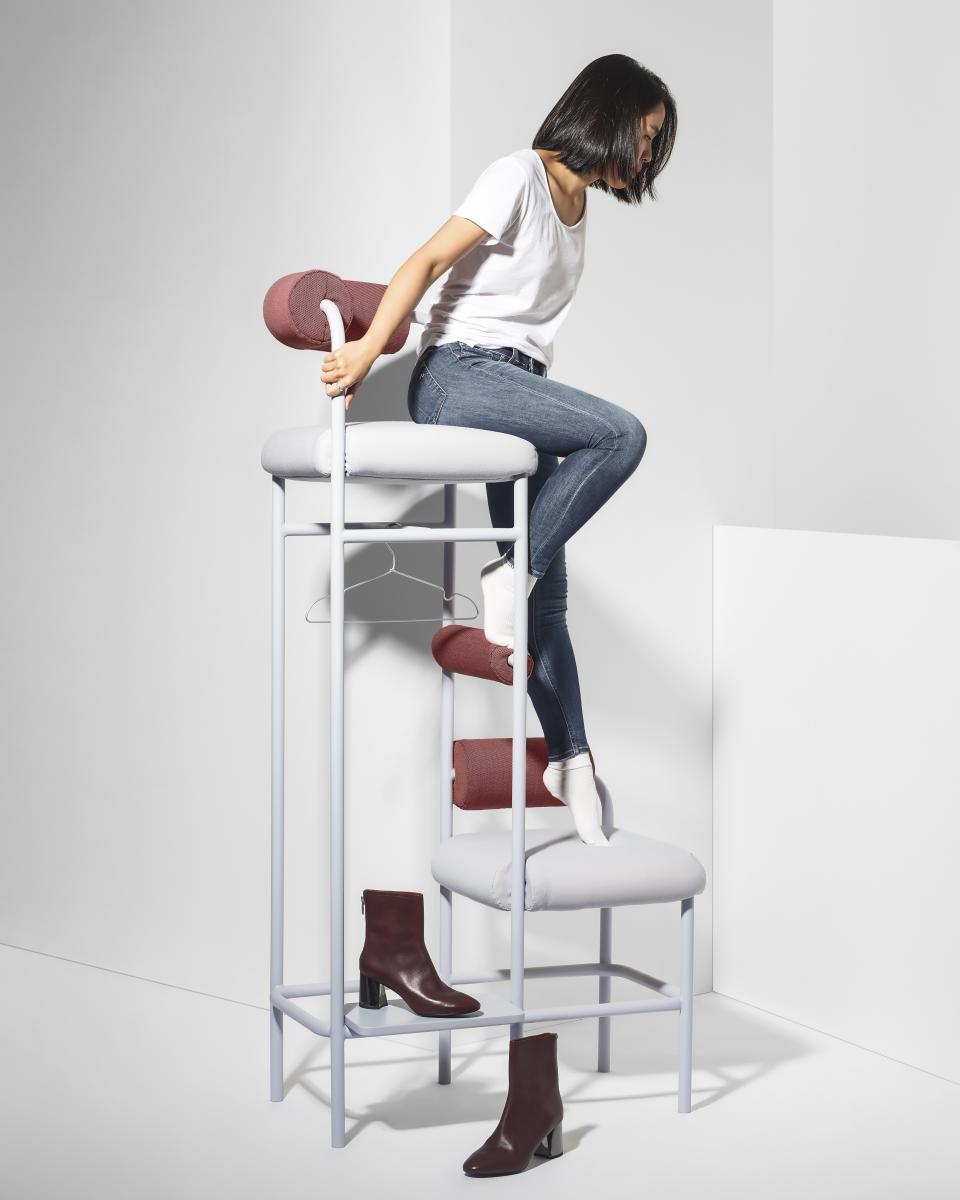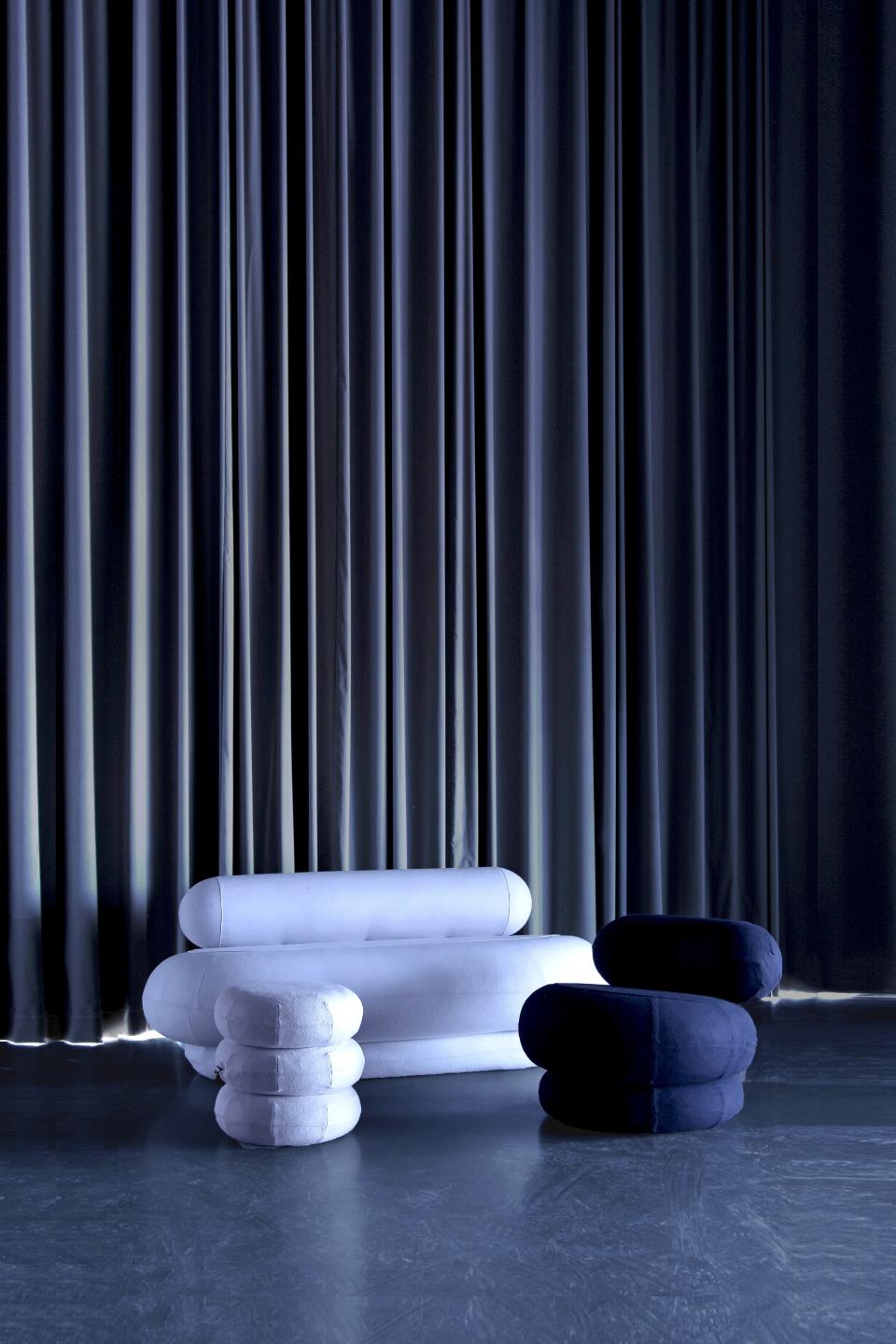What Does the Future of Furniture Look Like?
"The popularity of Pinterest and Instagram has reduced interiors, furniture, and products into two-dimensional aesthetically pleasing images, causing the disciplines to be perceived as banal and purely decorative,” says London-based design graduate Seray Ozdemir. “I simply don’t agree with this. Interiors, especially the domestic kind, are a reflection of economical, political, and sociological structural changes that society undergoes.”
Think the design students of tomorrow are more preoccupied with making a splash on social media than changing how we live? Think again. Ozdemir is one example of a new breed re-evaluating the future of furniture, many of whom showcased their work at last week’s Global Grad Show in Dubai, an annual presentation of leading graduate work from design schools around the world. This year, 150 inventions from 100 universities and 40 countries were shown. A number of furniture projects there demonstrated the concerns that students are currently facing. Interiors, according to them, can still be places of great experimentation and invention, in addition to decoration.

Ozdemir designed Corridor Society, a set of furniture that tackles the housing shortage in big cities such as London and New York, while studying at the Royal College of Art in the United Kingdom. The collection represented one of the central preoccupations of the next generation: space, or lack thereof. In her experience of flat-sharing, Ozdemir noticed how many apartments lacked living rooms—since these were used as extra bedrooms—so she designed furniture for what is often the "common room" in homes: the hallway. The Standing Sofa is a series of wall-mounted cushions for residents to lounge on, while the 3/4 Table is a circular table and chair system that makes good use of a corner.
“The idea is to turn the corridor—a transitional space that no one thinks to spend time in—into a space with furniture that is specific to it,” explains Brendan McGetrick, the curator of Global Grad Show, which is now in its fourth year. “So that if you did want to get together and have a chat or get friends over, you wouldn't have to be in a bedroom.”

Yu Li also explored the changing status of rooms with a seven-in-one cooking set (including hob, pot, pan, dish rack, and chopping board), which can be used without a kitchen. Jinho Han, a student at the Samsung Art & Design Institute in Korea, produced a wall-mounted refrigerator for living rooms or bedrooms, as, he explains, "millennials do not consume food at the kitchen table anymore."

Main_IMG
ECAL/University of Art and Design Lausanne grad Yesul Jang has designed the Tiny Home Bed for space-saving reasons. Raised in Korea, she was used to people living in small homes. When she moved to Switzerland to study, she was surprised to see the problem there too: High rents meant that lived in small apartments. So, she invented a bed with storage shelves built underneath and concealed by a concertina fabric. Hardly groundbreaking, but the style is key—the blonde wood and soft material create a sense of lightness that is essential for small rooms. “I couldn't find nice space-saving furniture that wasn’t complicated,” says Jang. “I wanted to create something simple and minimal instead.”

Sustainability was another key concern for designers at the Global Grad Show (not necessarily in how furniture is made, but certainly how it is shipped around the world). Christian Hammer Juhl is a young Danish designer and student at the Design Academy Eindhoven in the Netherlands. He was thinking about the cost—to the environment and to his pocket—of shipping furniture back home after his studies. “How could I create something that will ease the way we live and give a sense of belonging while moving between spaces?” he asked. 10:1 is a chic, inflatable set of furniture that reduces shipping quantity by 90 percent. As we become more mobile, Juhl predicts this will fit a new idea of living. "The idea of a home is less related to a specific space but increasingly related to the things we surround ourselves with,” he says. “Furniture has to follow this development and fit to this new way of living."
So does the future look rosy? McGetrick, the show's curator, says it varies from country to country. “There's an expectation of progress, with technology and design being applied to make life better,” he says of designers from nations such as Dubai and China. He admits that housing crises, climate change, and pessimism about the future are themes for graduates in Europe and North America. But students are working out solutions. “It's great to see they're thinking of how to deal with the reality of it here at the show."
More from AD PRO: Inside the Think Tank Where IKEA's Most Innovative Ideas Are Born
Sign up for the AD PRO newsletter for all the design news you need to know

